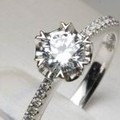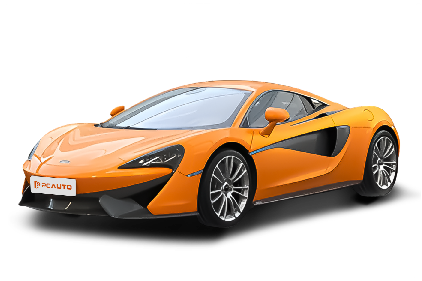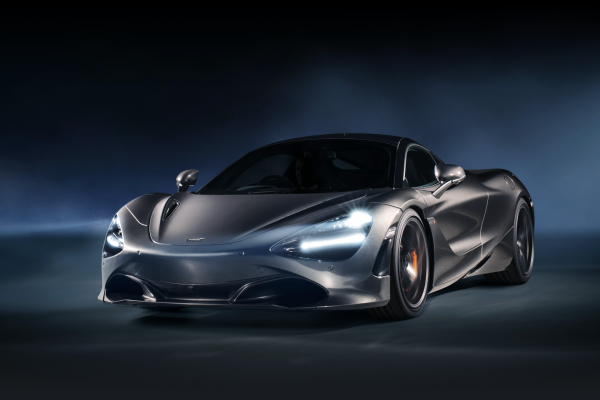Q
How to open the engine compartment of Mclaren 570S?
To pop the hood on a McLaren 570S, first make sure the car is completely stationary and the engine's off. Then, find the hood release handle near the driver's side door – give that a gentle pull to unlock things. Next, head around to the front of the car, and just below the McLaren badge, you'll feel the secondary release catch; lift that up, and the hood should open right up. Quick heads-up though: the 570S has a mid-engine setup, so the actual engine bay is in the rear. That front compartment? Just storage space. It's all part of optimizing weight distribution and aerodynamics, which makes sense for a car like this.
For Malaysian owners, with the hot and humid climate over there, it’s a good idea to periodically check the hoses and electrical components in the engine bay for any signs of aging. Keeping the bay clean helps too – you don’t want dust and moisture building up and affecting cooling efficiency. Now, the engine bay in the 570S is pretty tightly packed, so unless you’re a pro, it’s best not to start taking things apart. If you need any maintenance done, your safest bet is to hit up McLaren’s official authorized service centers. There’s a McLaren dealership right in Kuala Lumpur, and they’ve got the proper tools and trained techs to give your ride the expert care it deserves.
Special Disclaimer: This content is published by users and does not represent the views or position of PCauto.
Related Q&A
Q
Does the McLaren 570S have an automatic transmission?
The McLaren 570S is equipped with a 7-speed dual-clutch transmission that features an automatic shifting function, so the vehicle can operate in automatic mode. Its dual-clutch transmission enables smooth gear changes, enhancing both performance and driving experience. Moreover, it can shift gears automatically to adapt to various driving conditions, such as normal city driving or high-speed cruising.
However, this automatic functionality does not impair the driving experience. Drivers can also take control and shift gears manually if they prefer a more hands-on approach—for instance, when on a track or seeking a more enjoyable driving on winding roads. With its combination of automatic and manual-shift capabilities, the McLaren 570S caters to a wide range of driving preferences among car enthusiasts.
Q
How many gears does McLaren 570S have?
McLaren 570S has 7 gears. It is equipped with a 7-speed dual-clutch transmission. This type of transmission offers several advantages. Dual-clutch transmissions can provide extremely quick gear shifts, allowing for smooth power delivery during acceleration. For the 570S, a sports car known for its high-performance capabilities, the 7-speed dual-clutch gearbox helps it achieve rapid acceleration, such as its official 0-100km/h acceleration in just 3.2 seconds. The multiple gears also enable the engine to operate with its optimal power output and torque range across different driving conditions, whether it's cruising at high speeds on open roads or during intense track driving where quick gear changes are crucial for maintaining speed through corners.
Q
Is 570S a convertible?
The McLaren 570S has a convertible version, known as the 570S Spider, priced at RM 2,033,600. However, there's also a coupe body style, the 570S Coupe, priced at RM 1,870,570. Therefore, strictly speaking, the 570S isn't inherently a convertible as the name encompasses both body types. The convertible 570S Spider allows drivers to enjoy open-top motoring, feeling the wind and experiencing the sounds of the road more directly. It features a power-operated soft-top that can be raised or lowered at the touch of a button. The coupe version, on the other hand, offers a more aerodynamic and enclosed driving experience. Both models share many mechanical components, such as the 3.8-liter twin-turbocharged V8 engine producing 570 PS, delivering the excellent performance and typical handling characteristics of McLaren sports cars.
Q
Is McLaren 570S good for daily use?
The McLaren 570S can be suitable for daily use to some extent. With the starting price of RM 1,870,570, it offers both excellent performance and certain practical features. It has a 3.8L twin-turbocharged V8 engine with 570 PS, accelerating from 0 to 100km/h time in just 3.2 seconds. Despite being a sports car, it has some practical elements. It has features like keyless operation, dual-zone automatic climate control, and a touchscreen. The interior has comfortable seats with good support, and there's some storage space. It also has safety features such as ABS, stability control, and multiple airbags. However, it has a relatively low ground clearance of 93 mm, which might pose challenges on uneven roads. In addition, with petrol consumption of 10.7 L/100km , it is not very fuel-efficient. But overall, if you can overlook these minor drawbacks and afford its running costs, it can be used for daily driving while still providing an enjoyable driving experience.
Q
What type of engine is 570S equipped with?
The 570S is equipped with a 3,800 mL (3.8 L) V8 twin-turbocharged engine. This engine adopts a turbocharged intake system, capable of producing a maximum output of 570 horsepower. It reaches peak power at 7,500 rpm and delivers maximum torque between 5,000 and 6,500 rpm. The combination of the V8 configuration and twin-turbocharging ensures robust power delivery and rapid acceleration, which enables the 570S to achieve an official 0-100 km/h acceleration time of just 3.2 seconds and a top speed of 328 km/h. The engine's design perfectly aligns with the character of sports car, offering an enjoyable driving experience. Additionally, technologies such as direct fuel injection may be employed to enhance fuel efficiency and vehicle's performance.
Q
What's the top speed of McLaren 570S?
The McLaren 570S can reach a top speed of 328 km/h, making it a high-performance sports car capable of rapid acceleration and achieving extreme velocities. It is powered by a 3.8-liter V8 twin-turbocharged engine, generating 570 horsepower, which helps the vehicle achieve this impressive top speed. Whether it's the Coupe or Spider version, both can reach this high velocity. With a 0-100 km/h acceleration time of just 3.2 seconds, the 570S not only has a high top speed but also offers rapid acceleration. Its excellent performance perfectly show McLaren's engineering philosophy of creating a sports car that combines speed, power, and precision handling for an enjoyable driving experience.
Q
Is McLaren 570S an AWD model?
No, McLaren 570S is not an AWD (All-Wheel Drive) model. It is a rear-wheel drive sports car. This rear-wheel drive layout is common among many high-performance sports cars as it provides a more direct connection between the engine and the driven wheels, contributing to a more engaging driving experience and improved weight distribution for enhanced handling. Powered by a 3.8-liter twin-turbocharged V8 engine producing 570 PS, the rear-wheel drive configuration enables the McLaren 570S to achieve an official 0-100 km/h acceleration time of 3.2 seconds and a top speed of 328 km/h. The rear-wheel drive system, combined with its advanced suspension and braking systems, allows the 570S to deliver exceptional performance both on the road and the track.
Q
Is the McLaren 570S twin-turbocharged?
Yes, the McLaren 570S is indeed a twin-turbocharged model. It is powered by a 3.8-liter twin-turbocharged V8 engine, which significantly enhances the vehicle's power output. The twin-turbo system enables more efficient induction, delivering superior performance.
The 570S's engine generates substantial power and torque, allowing the vehicle to achieve a top speed of 328 km/h and accelerate from 0 to 100 km/h in just 3.2 seconds. Twin-turbo technology reduces turbo lag, providing immediate and consistent power delivery during acceleration, which results in exceptionally responsive performance whether on the road or track, creating an enjoyable driving experience.
Q
Is 570S faster than 650s?
No, the 570S is not faster than the 650S. Instead, the McLaren 650S has a higher top speed and shorter acceleration time. The 650S can reach a top speed of 340 km/h and accelerate from 0 to 100 km/h in just 3.0 seconds. In contrast, the 570S has a top speed of 328 km/h and an official 0-100 km/h acceleration time of 3.2 seconds. The differences in speed and acceleration are caused by the 650S's more powerful engine, which produces 650 horsepower, while the 570S's engine produces 570 horsepower. It's important to note that these are official figures, and actual performance may vary depending on driving conditions and other factors. However, in general, the 650S is faster. If you're looking for maximum speed and acceleration, the 650S would be the better choice. But if you prefer a more comfortable and practical sports car for everyday driving, the 570S may be better as it still offers impressive performance and is suitable for daily use.
Q
How much does it cost to maintain 570S?
The maintenance cost of 570S can be different. For routine minor maintenance at a 4S shop, it's approximately RM 7,300. If more parts are replaced, the cost may rise to RM 13,000, and with additional inspections, it could be close to RM 20,000. At a reliable local shop, a basic minor maintenance, like changing the oil and oil filter, air filter, etc., might cost around RM 1,800. Using fully synthetic oil for just an oil change typically costs about RM 2,000. A comprehensive minor maintenance including oil, oil filter, and air filter replacement is around RM 7,600. The maintenance cycle for 570S is 10,000 kilometers. Overall, the annual maintenance cost for the first three years is around RM 100,000 - RM 150,000, and after three years, it's RM 200,000 - RM 300,000. Keep in mind that these are just estimates and actual costs may vary based on factors such as vehicle usage, location, and parts condition.
Popular Cars
Model Year
Car Compare
Car Photo
Latest Q&A
Q
How much is the 2024 Vanquish?
The specific selling price of the 2024 Aston Martin Vanquish has not been officially announced yet, but based on the market positioning of the previous generation model and supercars in the same class, the starting price is expected to be between RM1.5 million and RM2 million, and the specific price will fluctuate depending on optional configurations and tax rates. As Aston Martin's flagship GT sports car, Vanquish is typically equipped with a V12 engine with a power output of over 600 horsepower, and features a carbon fiber structure and luxurious handmade interior that balances performance and comfort. It should be noted that these high-end sports cars often require advance booking and long delivery cycles. It is recommended to directly contact authorized dealers for the latest information, including customization options and financial solutions. In the same price range, models such as Ferrari Roma or Bentley Continental GT can also be considered, each with its own characteristics. For example, Roma leans more towards sporty handling, while Continental GT emphasizes luxury travel experience, and consumers can choose according to their own needs.
Q
What engine is in the Vanquish 2024?
The 2024 Vanquish is expected to pack a fortified 5.2-liter V12 twin-turbocharged engine, sourced from Aston Martin’s flagship powertrain lineup. With power likely bumped to around 700 horsepower and torque peaking at 800 Nm, it’s paired with an 8-speed automatic transmission—balancing blistering performance with seamless shifts.
The aluminum block and twin-scroll turbos keep weight in check while sharpening throttle response, and cylinder deactivation helps with fuel efficiency when you’re not chasing the horizon. As Aston’s GT flagship, the Vanquish’s tuning prioritizes low-end grunt, making it equally at home on cross-country hauls or twisty mountain passes.
Worth noting: these big-displacement turbo engines handle tropical climates with ease, thanks to cooling systems specifically tweaked for high-temperature resilience—critical when pushing hard. For those craving extra edge, optional carbon-ceramic brakes and rear-wheel steering dial up the agility, ensuring composure even when the roads get unpredictable.
Q
What does a 2024 Aston Martin cost?
The 2024 Aston Martin lineup sees significant price variations depending on model and specifications. The entry-level Vantage starts at approximately RM1 to 1.2 million, while the DB12 ranges between RM1.5 to 1.8 million. Flagship performers like the DBS 770 Ultimate or limited-run Valhalla can easily surpass RM3 million. These figures typically cover base configurations, though costs rise with optional performance packs, bespoke interiors, or specialty paintwork.
As a handcrafted British luxury marque, Aston Martins feature either uprated 4.0L V8 twin-turbo or 5.2L V12 powertrains, paired with cutting-edge tech like intelligent suspension and digital cockpits. Buyers should consult authorized dealers for exact configurations—the brand’s personalization program allows extensive customization of materials and finishes.
Pro tip: Factor in elevated insurance and maintenance costs. These high-performance machines follow specialized service schedules, so review aftersales policies beforehand. Always confirm final pricing with your dealer, as options dramatically impact the bottom line.
Q
How much is the 2024 Aston Martin Vanquish?
The specific selling price of the 2024 Aston Martin Vanquish has not yet been officially announced by the official, but based on the pricing strategy of the previous generation model and brand, it is expected that the starting price will remain in the range of 300000 to 400000 US dollars, and the specific price will be adjusted according to optional configurations and exchange rate fluctuations. As the flagship GT sports car of the brand, Vanquish continues the classic British design language, equipped with an enhanced V12 engine with a maximum power of over 600 horsepower, and equipped with a new generation of adaptive suspension and carbon fiber body technology, achieving a balance between luxury and performance. It is worth noting that these ultra luxury models are usually produced on an order basis with a long delivery cycle. It is recommended to obtain customized quotes through authorized dealers. Competitors in the same class include Ferrari Roma and Bentley Continental GT, but Vanquish emphasizes the combination of long-distance comfort and driving pleasure. Its iconic grille design and hand sewn interior craftsmanship also continue the brand's unique recognition.
Q
Does the 2019 Kia Cerato have Apple CarPlay?
The 2019 Kia Cerato did come equipped with Apple CarPlay, which was a pretty standard tech feature for its class at the time. It lets you mirror your iPhone’s navigation, music, and calls onto the car’s display via USB—handy for keeping things safe and convenient on the road. Android Auto was also onboard, so it covered both major phone ecosystems. The 8-inch touchscreen was responsive, with a clean interface that made it easy to use.
Just a heads-up: for the best CarPlay experience, make sure your iPhone’s OS is compatible and use an original cable. Back in 2019, rivals like the Toyota Corolla and Honda Civic offered similar tech, but the Cerato stood out for its value, especially if you wanted solid features without overspending. If you run into any hiccups with CarPlay, the owner’s manual or a dealership visit should sort you out.
View More



















Pros
Cons